9 tips for keeping your villagers alive in survival city builder Farthest Frontier
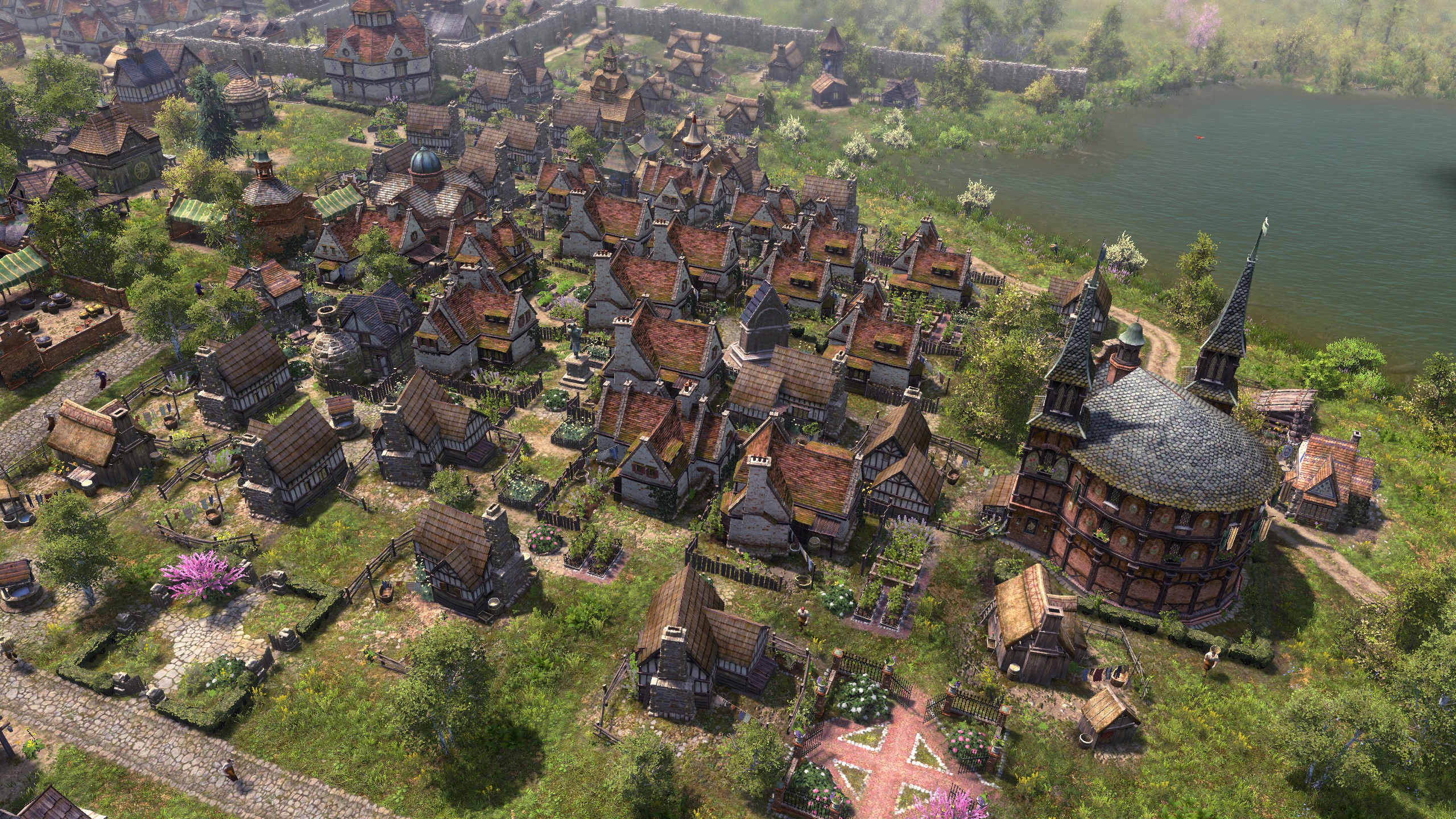
Survival city builder Farthest Frontier just entered early access on Steam. Developed by Crate Entertainment, makers of fantasy ARPG Grim Dawn, Farthest Frontier is a challenging and occasionally brutal medieval village management sim where you don't just need to keep your citizens happy, you need to keep them alive. If you want your town to thrive and grow you'll need to help your villagers survive heat waves, freezing temperatures, starvation, scores of diseases, crop failures, injuries, raiders, wild animal attacks, and even bee stings.
Luckily I was able to play Farthest Frontier before it launched into early access, and now your fledgling town can profit by learning from all my terrible mistakes. Below you can find out how to keep your villagers warm, the most important part of trading, how to make homes desirable, how bees can screw up everything, and more.
Here are 9 beginner tips for Farthest Frontier to keep your town running smoothly and your villagers from dying horribly.
Start chopping firewood immediately
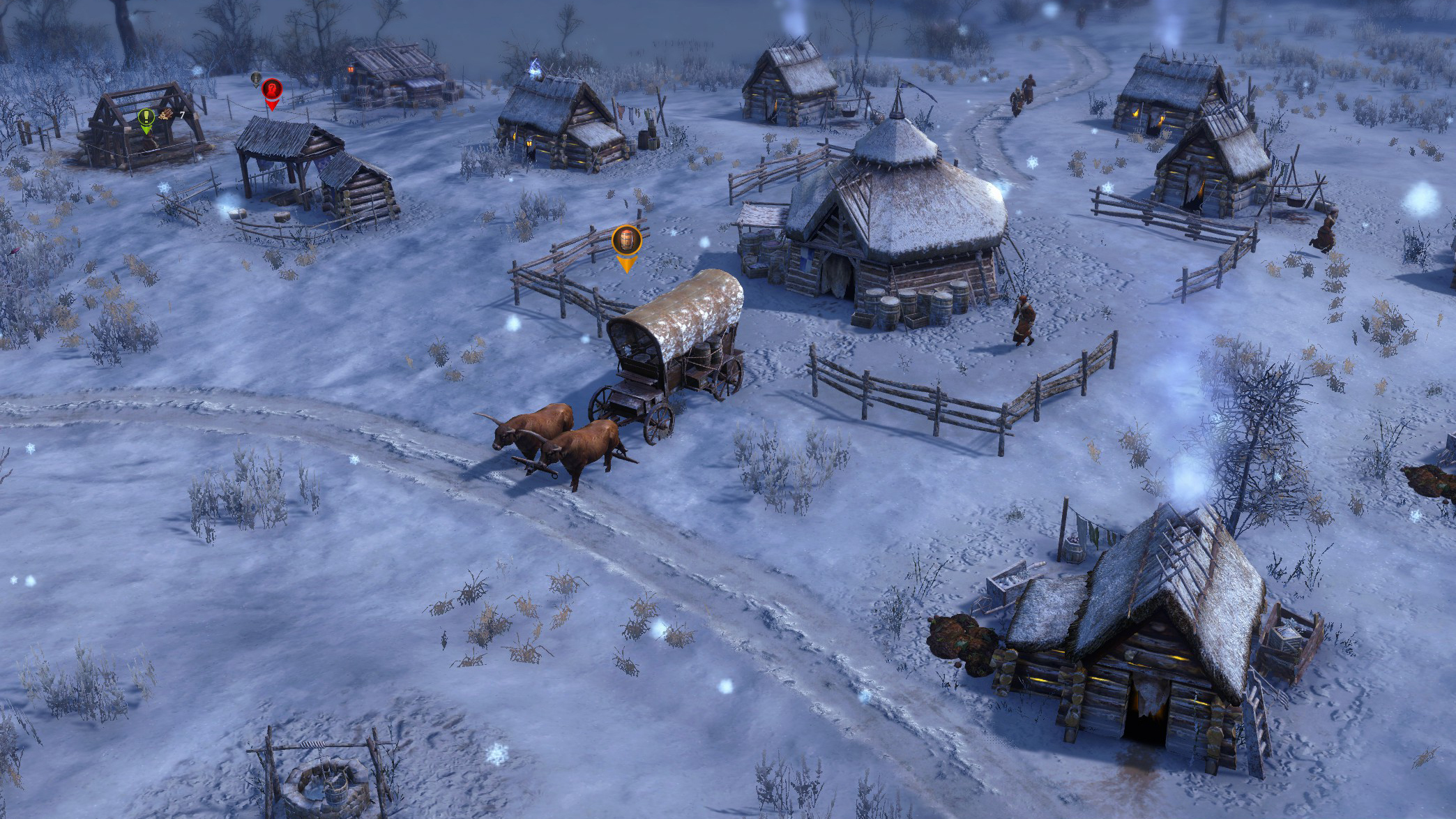
Placing your town hall on the map is the first step to establishing your new village, but there are two major priorities: housing and firewood. Your villagers need shelter, but just as importantly, they need to keep warm because your first winter is quickly approaching and without firewood they'll freeze to death, even in their own homes.
Build a firewood splitter immediately, and assign two villagers to it. When you're starting out, it's tempting to use all your lumber for housing and resource gathering buildings like hunting camps and foraging huts, but remember you've got a small stockpile of food already. The most critical resource when your first winter hits is firewood. Get those villagers chopping logs long before winter arrives, and don't tell them to stop, or your game will be over before it's had a chance to begin.
You can retarget hunting camps, foraging huts, and work camps
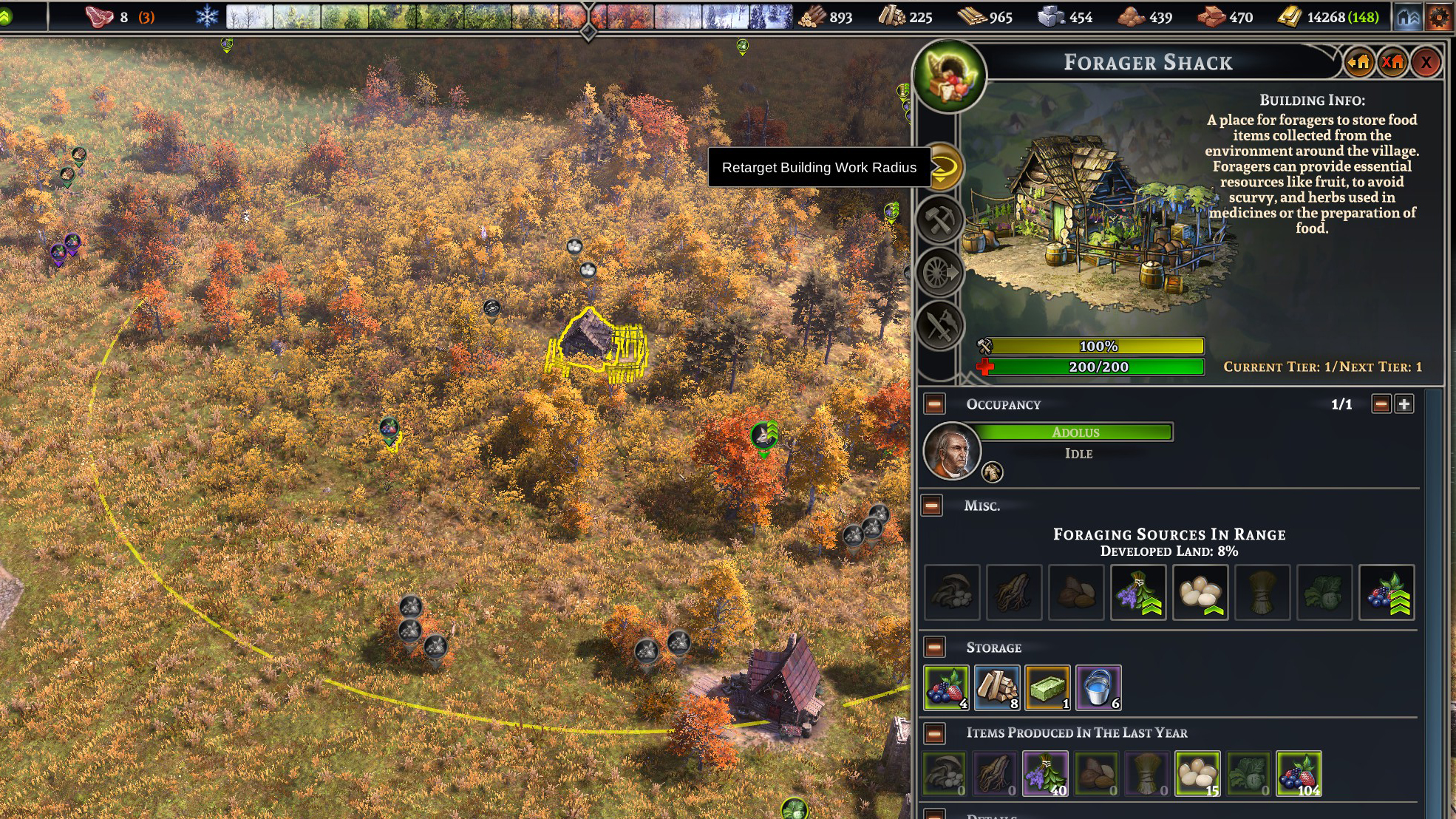
As you place hunting camps, foraging huts, and work camps you'll naturally look for areas where resources are abundant. But they may not stay that way for long. For example, if you place your hunting camp near a wooded area displaying a deer icon, those deer may become depleted over time or move elsewhere on the map. Work camps will harvest trees and stones within its radius, and can clear the entire area relatively quickly.
When resources are depleted you can move those buildings, but that costs labor and time, so it's better to retarget the building's work radius. If you click on a building, you'll see a yellow circle at the top of the building's menu. Click it, and you can retarget the area of work for that building. It's especially useful for work camps: when they've exhausted the wood and stone supply, assign them to work in a new area without having to move the building itself. Just keep in mind that if you move the target area too far away, they'll spend a lot of extra time traveling between the building and their work area, lowering their productivity.
Make sure you have enough general laborers
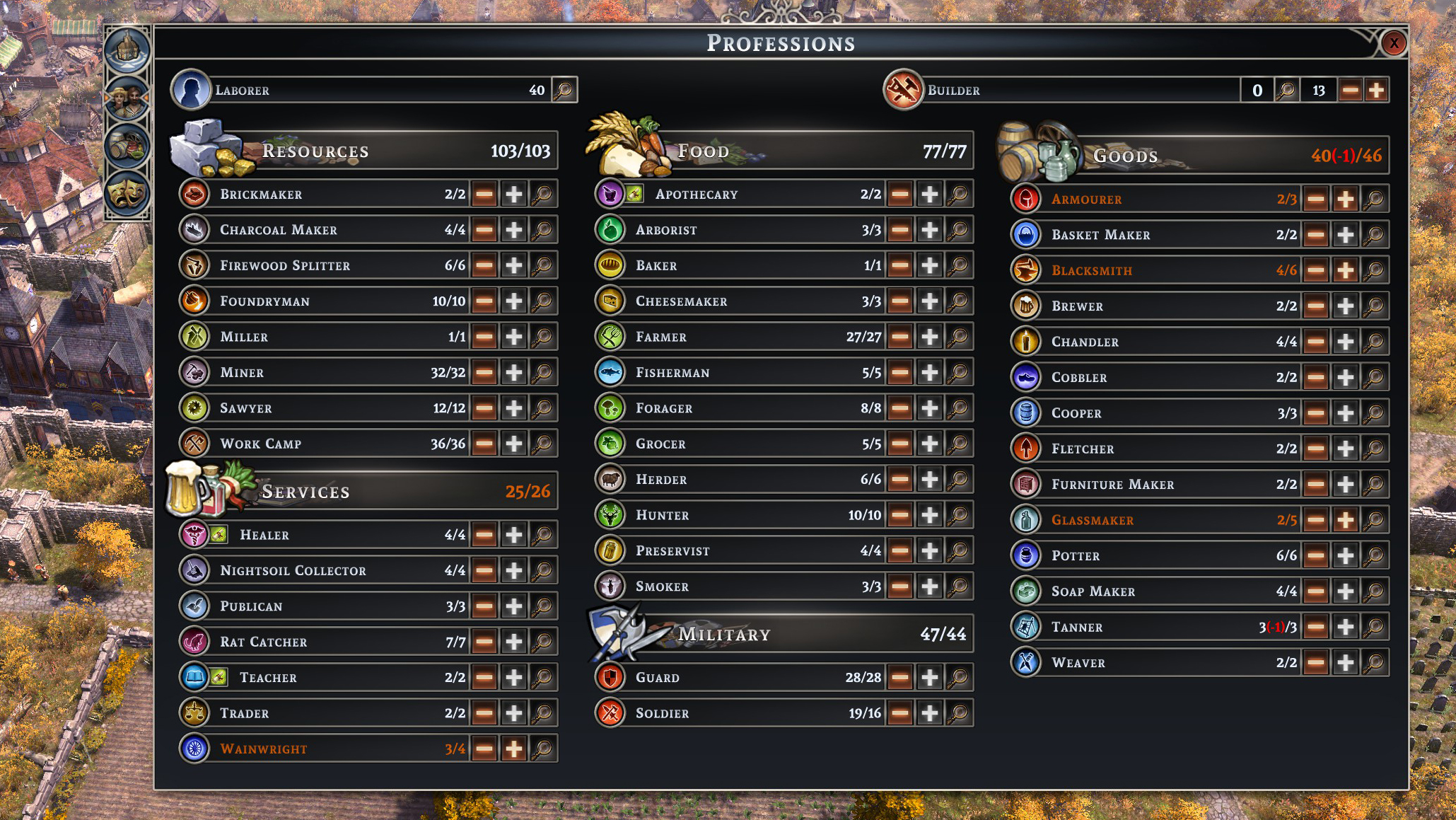
As your town grows, you'll attract new villagers (and your citizens will begin having children). The more buildings you create, the more jobs you'll need to fill. Hunters, foragers, farmers, tanners, weavers, market workers, guards and soldiers—every profession needs a dedicated workforce.
But don't forget you also need general laborers. They aren't assigned jobs, they're just a pool made up of every able-bodied person who isn't working in a specific trade. Laborers deliver supplies, harvest the trees and stones you mark for clearing, prepare building sites, and do the actual building. In the professions panel you can see the villagers working in each trade, and at the top left you'll see your labor pool. If that number is red, that means you don't have enough laborers to keep your town running efficiently, so at times you may want to unassign workers from specific professions to fill the labor pool. Also in the upper right corner of the menu, you can see the number of laborers who become builders when a building needs construction, and that number can be raised or lowered depending on your needs. If your buildings aren't going up quickly enough, or your supplies aren't moving around town efficiently, check your laborer numbers and make adjustments.
Raiders are more interested in stealing than killing
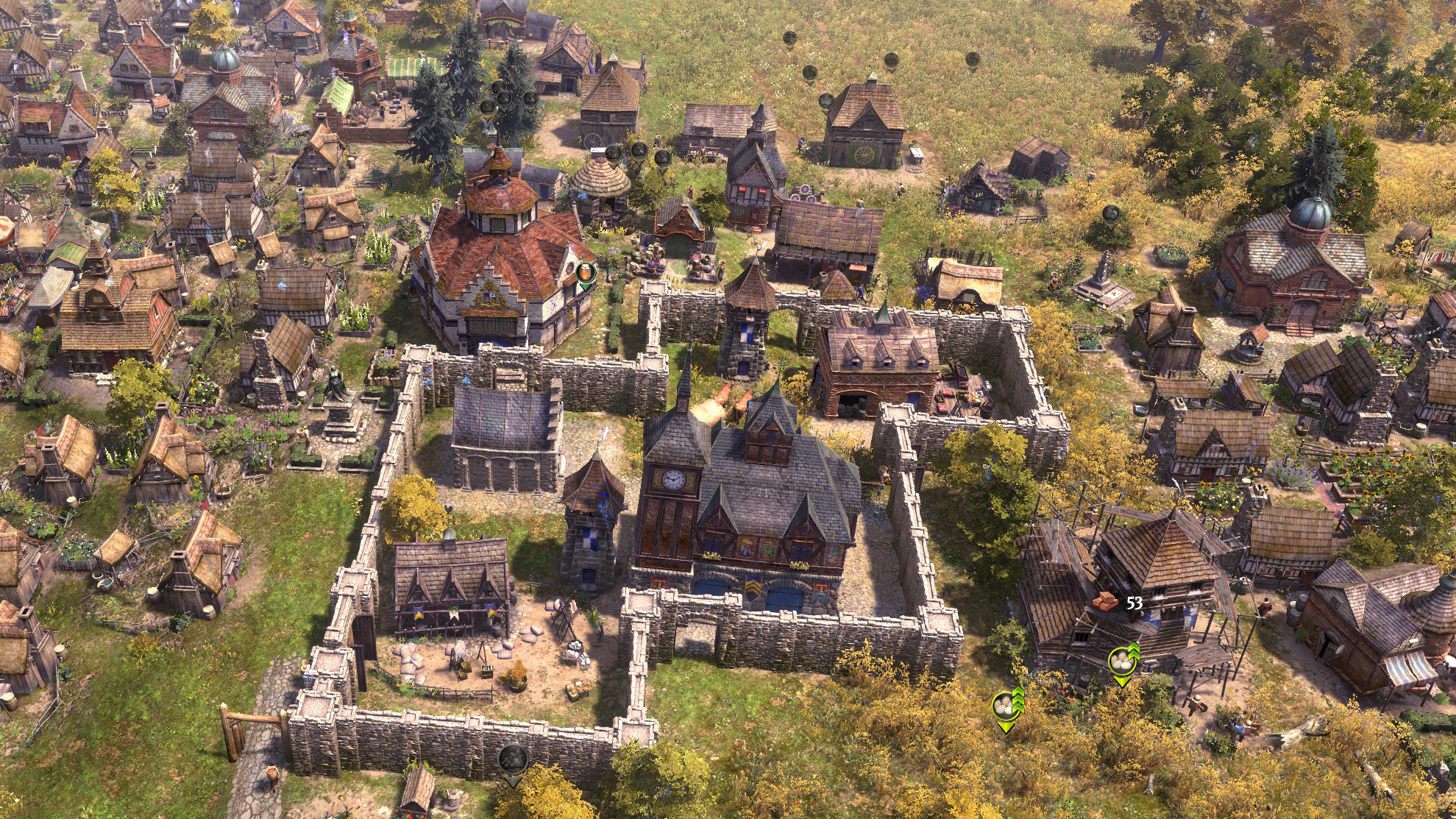
Don't get me wrong, raiders will happily slaughter any villagers who get in their way, but their main goal is to pillage your town's valuables. During a raid they'll head straight for your trading hall, your warehouses, and even your foundry, whatever has the best chance of letting them make off with gold, food, iron ingots, and even basic resources like flour. When their pockets are full, they won't hang around just to fight: they'll run off into the woods, taking their score with them.
It'll be a long while before you have the resources to build walls around your entire town, and even then they'll need to be guarded by watchtowers and soldier barracks. But you can start early by just building walls and gates around your trading posts, warehouses, and other valuable buildings to make sure raiders can't just run in, grab what they want, and run back out. Gates allow your citizens to pass through but raiders will have to stop to break them down, giving your guards, soldiers, or armed citizens time to deal with them.
Don't forget to stop ringing the town hall bell

Speaking of raiders, you can sound an alarm that will alert your villagers when a raid begins by clicking the bell icon in the town hall menu. That will start the bell ringing and villagers can run into the town hall to garrison.
But don't forget when the raid is over to click the bell again so it'll stop ringing. If you don't, the villagers who ran into the town hall will stay there as long as the bell keeps clanging. They'll even starve to death if they're in there too long. Silly villagers. Silly dead villagers.
You can control individual citizens
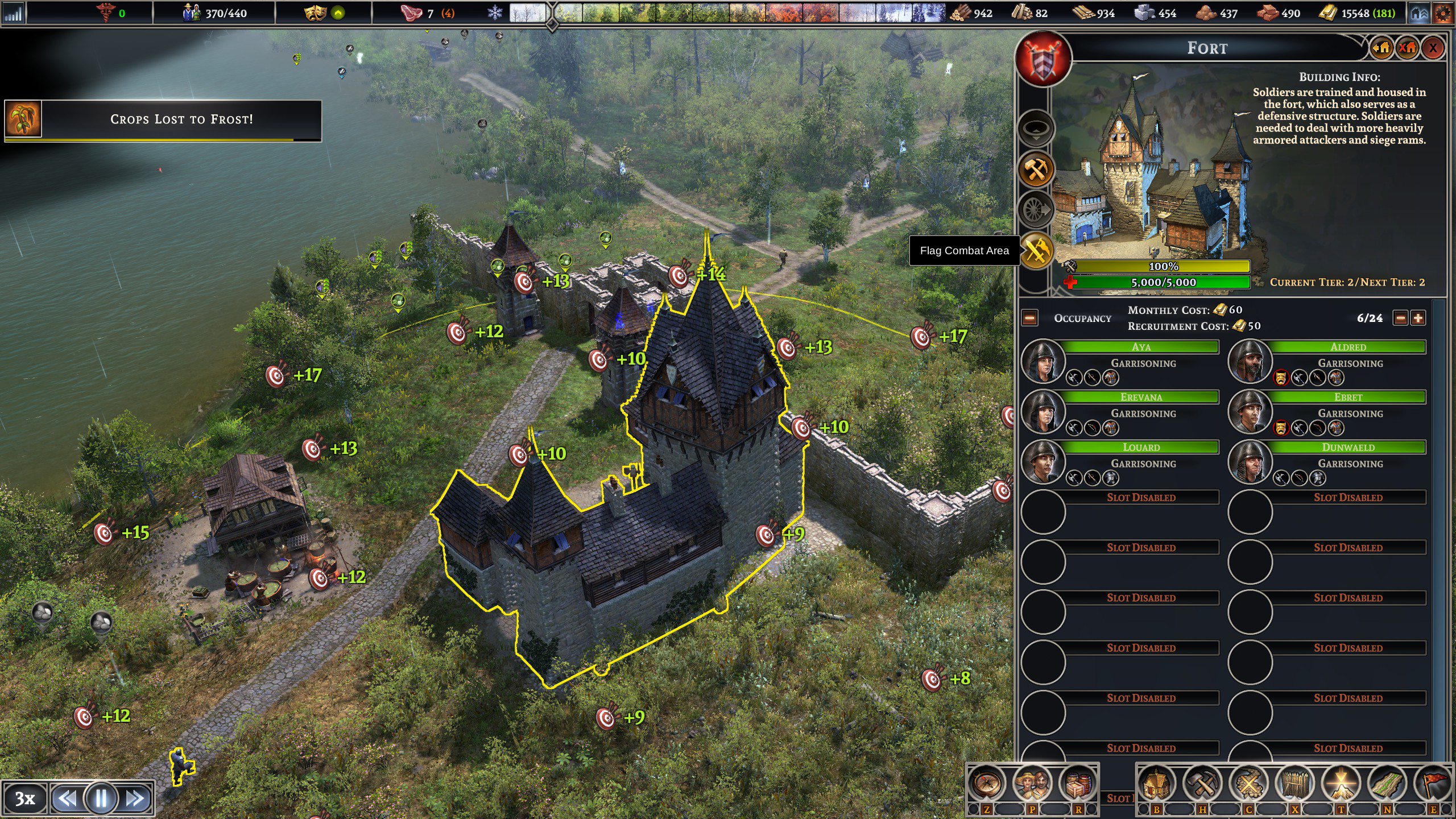
Is a wolf chasing someone around the village, or are raiders trying to break into a building and no one is responding? At times you may wish you could reach down into your village and manually move people where you need them to go.
Well, you can. You can select individual citizens, or drag to select multiple villagers, and then click the map where you'd like them to go. Even unarmed, a pack of villagers can take down a wild animal that's running rampant. Later in the game when you've got some defenses built, soldiers can be directed to where they're needed most by selecting the barracks and then clicking the "Flag Combat Area" button in the menu, then clicking the map where you'd like them to assemble. Don't forget to remove the flag later by clicking it so they can return to the barracks. And if you want villagers to explore the dark areas of the map, right-clicking will plant an exploration flag and someone will (eventually) run over to check it out.
Place and upgrade decorations

A key to improving your tax base and upgrading your town is to make homes desirable. Most of this is based on placement—homes near amenities like a market, pub, or theater will be more desirable which will help them upgrade from shelters to homesteads to large houses to manors, with each level allowing you to collect more gold in taxes each year. It's tempting to cram houses as closely together as possible so more will fit within the radius of the amenities, but leave a bit of room for small items that you can place between them: decorations.
These decorations, like gardens, plazas, statues, and shrines, can also improve the desirability of nearby homes. But don't just place them and forget them. Many of these decorations can be upgraded if you're got the resources to spare, and that'll improve the desirability of nearby homes even more.
Bees are profitable, but will distract your farmers

A great resource for your town is bees. Building apiaries will generate honey and wax during the warmer months, and those resources can be used to make candles, medicine, and beer. Having multiple apiaries means your villagers can enjoy the pub, visit the apothecary, and purchase candles (a luxury item) and these products can also be sold to traders. You should build apiaries as soon as you can, and the best part is that unlike most resource generating buildings they don't require a full-time villager assigned to them.
But here's the catch. The apiary menu says "villagers" will collect the honey and wax, but that's not entirely accurate. As far as I can tell, only farmers will collect resources from apiaries, which means if you have multiple apiaries strewn around your map it'll take up a lot of your farmers' time. If you're wondering why your farmers aren't tending crops or clearing new fields quickly enough, they're probably wandering around collecting honey. Make sure you build your apiaries in the areas directly surrounding your farms to cut down on your farmers' travel time, and if you need to clear land for a new field, you might even consider destroying the apiaries (and rebuilding them later) so your farmers will focus on just the farms.
Don't miss visits from traders
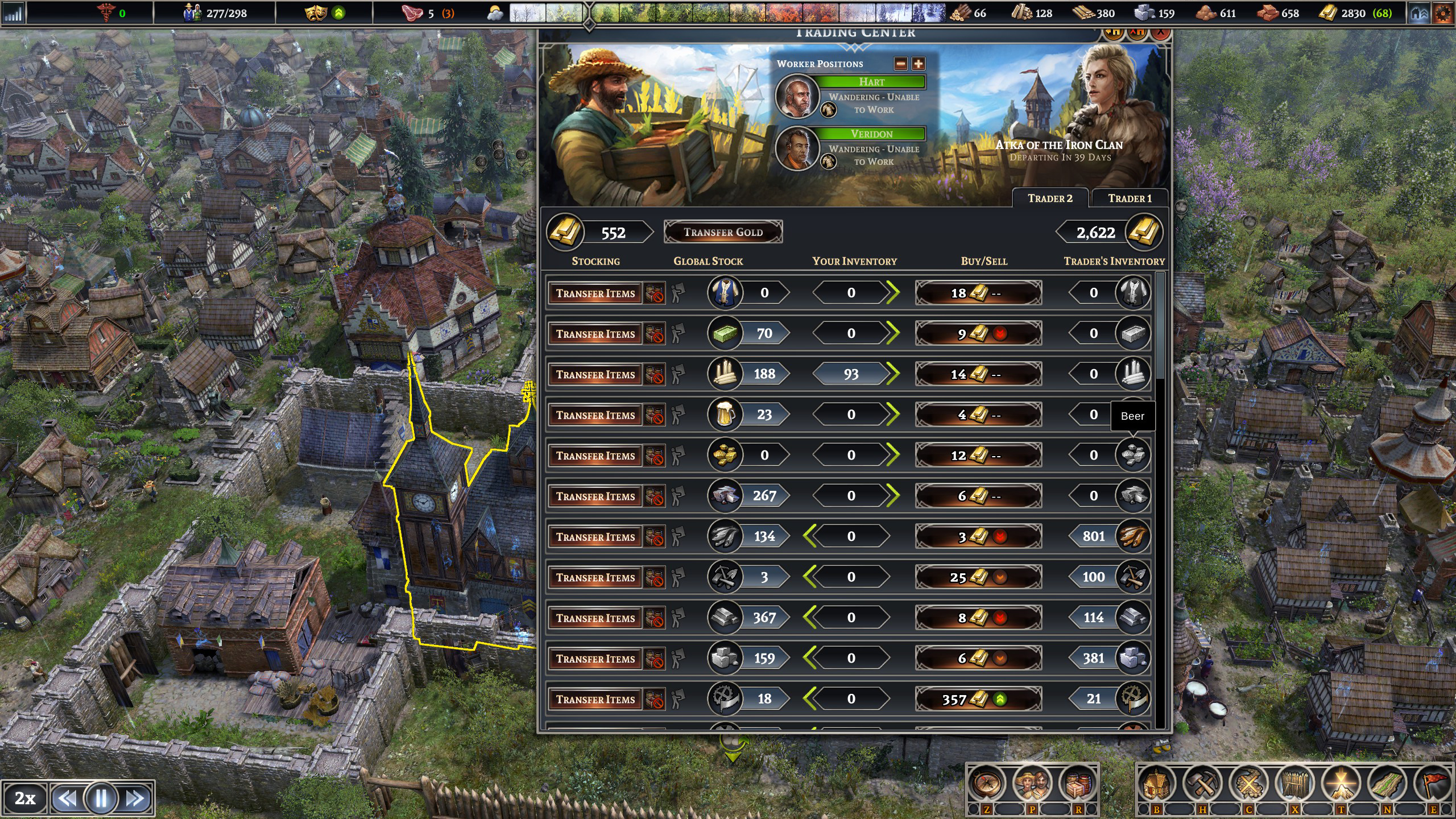
When you've got a trading post built, you'll begin getting visits from traders. Trading is critical for your town's survival, both to sell your surplus goods for gold and to acquire resources and products you aren't producing yourself. But each trader only buys and sells a handful of products, and will only stay in town for a number of days, so you need to keep an eye on your trading post to see when they've arrived, which is usually early in the year.
I can't stress this enough: don't miss a single trader visit. I played on a map that had only a single sand deposit, and when it was depleted I had to rely exclusively on traders selling sand and glassware. Even with an upgraded trading post, you'll only get three traders each year. Suddenly noticing that a trader has been waiting at the post, and then seeing they're about to leave, can be crushing if they've got goods you only see for sale every few years, or if they were interested in buying something you've got in surplus.
And you can't just smack the pause button: trading isn't instantaneous. If you want to sell supplies, those supplies need to be transported by a worker from storage to the trading post, which takes time. If you want to move gold to the trading post so you can buy something, someone will have to physically move it there. That's why it's crucial to notice when a trader has arrived in town. If you miss an opportunity, you might not get it again for years.